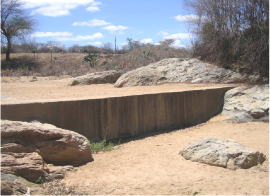
Groundwater Recharge
Groundwater recharge is the infiltration of rain and surface runoff into the soil. The soil functions as a buffer to store water and makes it available in times of need. Groundwater recharge lifts the groundwater table and impedes depletion. This prolongs water availability for instance in village wells throughout the dry season. It further benefits the environment and ecosystem by retaining soil moisture, favouring regreening and counteracting desertification. At the same time, soil has a unique filtering capability. Therefore groundwater recharge can actually improve the quality of water.
Well-known groundwater recharge techniques are:
- sand dams
- contour trenches
- infiltration wells
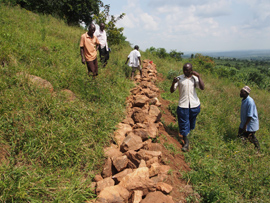
Surface Runoff Harvesting
Surface runoff harvesting is the catching and diverting of surface runoff flows by storing these in open or closed storage systems. Surface water harvesting includes all systems that collect surface runoff water after a rainstorm or in intermittent streams, rivers, or wetlands for storage in open ponds and reservoirs. Both the landscape itself (for example in natural depressions) as well as storage tanks can be used as the storage medium. This can provide water for direct household use, irrigation, livestock, and aquaculture. When using the water for household use, treatment of the water is required.
Well-known surface runoff harvesting techniques are:
- catchment and storage dams
- road runoff harvesting
- protected side intake
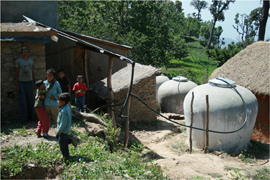
Roof Water Harvesting
Roof water harvesting is the collection of rainwater falling on roof surfaces and its storage in storage systems, such as jars or tanks. The type of roof surface determines the amount of water actually flowing to the storage systems. Note that the roof type also influences the risk of water pollution. A rooftop rainwater harvesting system might be a 500 cubic meter underground storage tank, serving a whole community. Or it might be just a bucket, standing underneath a roof without a gutter used by a single household.
Well-known surface runoff harvesting techniques are:
- rain jars
- plastic lined tanks
- underground tanks
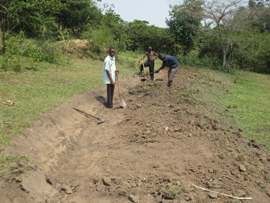
In Situ
In Situ rainwater harvesting is the storing of rainwater directly on the spot, in the area where the water is going to be used. This technique has been used mostly in arid and semi-arid regions, where it is necessary to store the maximum amount of rainwater during the rainy season for use at a later time - especially for agricultural water supply. The technology requires minimal additional labour and can be used as a method of artificially recharging groundwater aquifers.
Well-known surface runoff harvesting techniques are:
- mulching
- furrows
- trenches
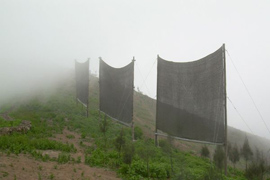
Fog & Dew
Fog and dew collection is an innovative method to use fog, rain and dew as sustainable water resource. Fog and dew collection is mostly used by people living in arid regions. Fog is composed of enormous numbers of tiny water droplets. A plastic mesh can collect the wind-blown droplets. Typical fog harvesting in a well-selected desert environment would give 5 litres of water per square meter of mesh per day. Dew harvesting is simply taking advantage of water vapour in the atmosphere to harvest clean and potable water through condensation.
Well-known surface runoff harvesting techniques are:
- interception nets
- condensers



